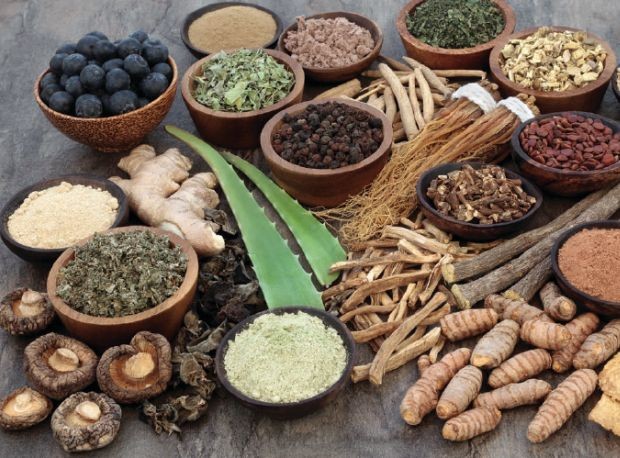Intro to Ayurveda
According to Ayurveda, everybody is born with a mixture of these 3 doshas. Establishing your primary dosha is the first step towards finding your optimal state of well balanced, natural health. If you do not understand your very own one-of-a-kind Ayurvedic type of body, we encourage you to take our totally free dosha test.
What Is Ayurveda?
The name "Ayurveda" is stemmed from two words in Sanskrit, "ayuh" suggesting "life" or "long life" and "veda" implying "science" or "spiritual expertise." Ayurveda's meaning as a result about equates as "the scientific research of longevity" or "the sacred understanding of life."
At its root, Ayurveda is a holistic practice and also means of living that can aid each people to insurance claim and commemorate our capability for health. Ayurveda can aid us:
Sync up with our truest frame of mind
Honor as well as establish our toughness
Hone in on our challenge locations
Redirect harmful propensities
Preserve balance despite difficulty
In other words, Ayurveda is not simply about taking an organic formula and also awaiting the results. Instead, Ayurveda motivates you to be an active participant in your own journey towards recovery.
This includes learning about your partnership with the components as well as the one-of-a-kind combinations they create called doshas, which we will explore below. Initially, let's take a look at Ayurveda's background.
Ayurveda: A Quick Background
The method of Ayurveda as a medicine is thought to date back to over five thousand years, during the Vedic period of ancient India. The earliest well-known references to Ayurveda and also its sibling scientific research, Yoga exercise, appeared in scholarly messages from the time called "the Vedas."
Ayurveda experienced a period of prosperity as the Vedic messages were instructed as well as shared, but this was followed by a virtually thousand-year battle to stay relevant following India's political battle with different invading countries-- most notably the British Realm.2.
In spite of this, those who exercised Ayurveda on the fringes of society kept the custom active till India acquired independence in 1947. Ayurveda after that resurfaced as a significant system of health care that sustains in India to now.1.
During the New Age motion of the 1980s, Ayurveda began to make its means westward, assisted along by the increasing popularity of yoga and also Eastern spiritualism.
Thanks in no small part to the trainings of recognized doctors and also herbalists like Drs. Vasant Lad, Deepak Chopra, and David Frawley, Ayurveda has actually gotten prestige among an expanding population of health-conscious people in the USA as well as all over the world.2.
Ayurveda's Meaning of Health and wellness.
The Sanskrit word for health and wellness, svastha, is a state in which the mind, spirit, and also detects connect sympathetically to experience a feeling of Self, wellness, as well as also bliss. Accomplishing this may look like a soaring objective, but Ayurveda gives a depository of elegant as well as insightful devices to assist us get there and Earthomaya.com .
Ayurvedic Principles.
Prior to you discover how Ayurveda can aid you, you need to initially discover just how to see yourself from an Ayurvedic perspective. The first step is to understand some crucial Ayurvedic principles, lenses whereby Ayurveda checks out the universe.

Analyzing the regulations of nature.
Identifying different states of health or imbalance.
Charting a program toward boosted well-being.
Checking out these core concepts will additionally aid illustrate what makes Ayurveda such a classic art as well as scientific research.
The Five Elements.
Ayurveda recognizes 5 aspects as the fundamental building blocks of nature:.
Earth.
Water.
Fire.
Air.
Ether (Room).
Every material includes all five of these elements. That said, in a provided substance, one or two aspects are commonly predominant over the others.
The Twenty High qualities.
Ayurveda additionally determines twenty high qualities (gunas) that can be used to describe every substance or experience. These high qualities are arranged right into the following 10 pairs of revers:.
HeavyLight.
Slow (Dull) Sharp (Permeating).
ColdHot.
OilyDry.
SmoothRough.
DenseLiquid.
SoftHard.
StableMobile.
GrossSubtle.
Gloomy (Sticky) Clear.
The gunas are important to comprehending the Ayurvedic concept that like rises like and that revers balance.
For example, an individual that is especially cool natured, living in a cool climate, in the middle of winter, is most likely to be experiencing an aggravation of the chilly high quality.
The treatment? Warm-- in the form of warming up foods, warm beverages, home heating flavors, comforting bathrooms, cuddly cozy garments, as well as when possible, an abundance of heart-warming experiences.
The Doshas and Your Ayurvedic Type Of Body.
After that there are the three doshas (physical wits): vata, pitta, and also kapha. The doshas, or some mix of them, can be determined in different seasons, environments, landscapes, activities, plants, as well as pets.
Each of them embodies a combination of components and qualities to produce an useful entity-- an energetic force of nature.
All 3 doshas exist in everybody, but the proportion between them varies a large amount from one person to the following.
We will certainly get to that in a moment, but initially, below is a review of the essential nature of each dosha.
Each people has a combination of these 3 doshas in our bodies at any kind of given time. There is a combination of doshas we are born with, called our constitution, Ayurvedic body type, or prakriti in Sanskrit.
We additionally have a state of equilibrium (vikriti) which stands for the doshas that rise within our body at a provided time. If the doshas build up beyond healthy and balanced limitations (those figured out by one's constitution), they can ruin our health.
The Distinction Between Constitutions as well as Imbalances.
Knowing both your Ayurvedic constitution and your existing state of balance is exceptionally valuable. This expertise will certainly allow you to readjust one of the most fundamental elements of your day-- like how you exercise or when you eat-- to much better assistance your general well-being.
However, there are essential distinctions between the doshas that comprise your constitutional makeup and also the doshas that can be imbalanced within you.
Understanding Constitutions.
As discussed in the past, your constitution, prakriti, or Ayurvedic body type, is developed within you at conception as well as remains continuous throughout your lifetime. It represents your natural state of stability and your plan for excellent health and read more.
Vata-Type: A better quantity of vata, lesser amounts of pitta as well as kapha.
Pitta-Type: A better amount of pitta, minimal quantities of vata and kapha.
Kapha-Type: A higher quantity of kapha, minimal quantities of vata as well as pitta.
Vata-Pitta-Type (or Pitta-Vata): Greater quantities of both vata as well as pitta, a lesser quantity of kapha.
Pitta-Kapha (or Kapha-Pitta): Greater amounts of both pitta as well as kapha, a lower quantity of vata.
Kapha-Vata (or Vata-Kapha): Greater quantities of both vata as well as kapha, a minimal amount of pitta.
Tridoshic (or Vata-Pitta-Kapha-Type): Equal amounts of all three doshas within the body.
Your constitution influences your physiology, your likes and also dislikes, your propensities and behaviors, your mental and emotional character, and also your vulnerabilities toward discrepancy and illness. Consequently, learning just how to manage your constitution can be truly informing.
Understanding Imbalances.
Uncovering your current state of balance will certainly reveal you the here and now level of the doshas in your system. In contrast to one's constitution, the current state of balance can as well as does alter over time as we move via various environments, different periods, as well as the numerous stages of life.

A vata imbalance takes place when vata remains in extra. This can cause worry, stress and anxiety, physical as well as psychological tightness, ungroundedness, inadequate flow, irregular bowel movements, dry skin, fracturing joints, emaciation, sleep problems, twitches, tremblings, and other unusual movements.
A pitta imbalance occurs when pitta remains in excess. This can trigger temper, envy, swelling, excessive warmth, heartburn, loosened feceses, migraines, breakouts, bruising, bleeding problems, sharp cravings, an over active metabolism, as well as problem resting.
A kapha imbalance occurs when kapha remains in excess. This can trigger attachment, greed, resistance to alter, absence of inspiration, thickness psychological and body, excessive rest, anxiety, a sluggish metabolic rate, congestion, water retention, solidifying of the arteries, and the formation of masses and also growths.
It is additionally feasible for more than one dosha to be out of balance at an offered time, or for all three doshas to be unbalanced.
As mentioned earlier, Ayurveda educates that like boosts like which opposites balance. (See the twenty qualities table over.).
For instance, allow's claim your pitta is intensified. You have actually had a short temper lately, are extremely judgmental, and also have some level of acidity in your digestion tract. Which high qualities should you be connecting with to locate equilibrium?
High qualities that are warm, sharp, light, fluid, spreading out, and oily.
Qualities that are amazing, slow-moving, heavy, dense, steady, and also completely dry.
If you claimed "B," you're finding out quickly! When we know which particular qualities are aggravated, we can be much more accurate in our treatment techniques, locating details methods to integrate the essential opposite top qualities into our lives to locate equilibrium and
science Ayurveda
.
Which Dosha Should I Focus on Harmonizing?
Keep in mind, if any of the doshas are out of equilibrium (as well as for the majority of us, a minimum of one of them is), your constitution will not tell you the whole tale.
Your existing state of balance might really be more important because it highlights which doshas you require to calm in order to go back to equilibrium, and it can help you identify the most effective treatment strategies for your particular situation.
There are, of course, some universals in Ayurveda: practices that are generally understood to be beneficial for all of us, regardless of constitution or current state of balance.
But if you follow only general principles, you may inadvertently limit Ayurveda's extraordinary ability to specifically support you and your changing needs.